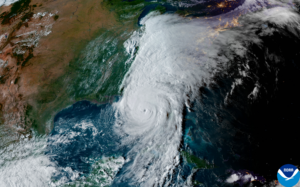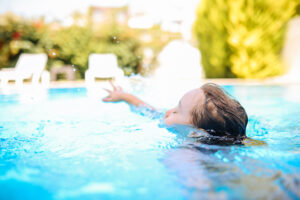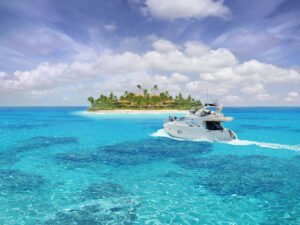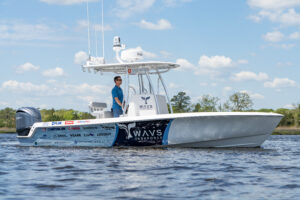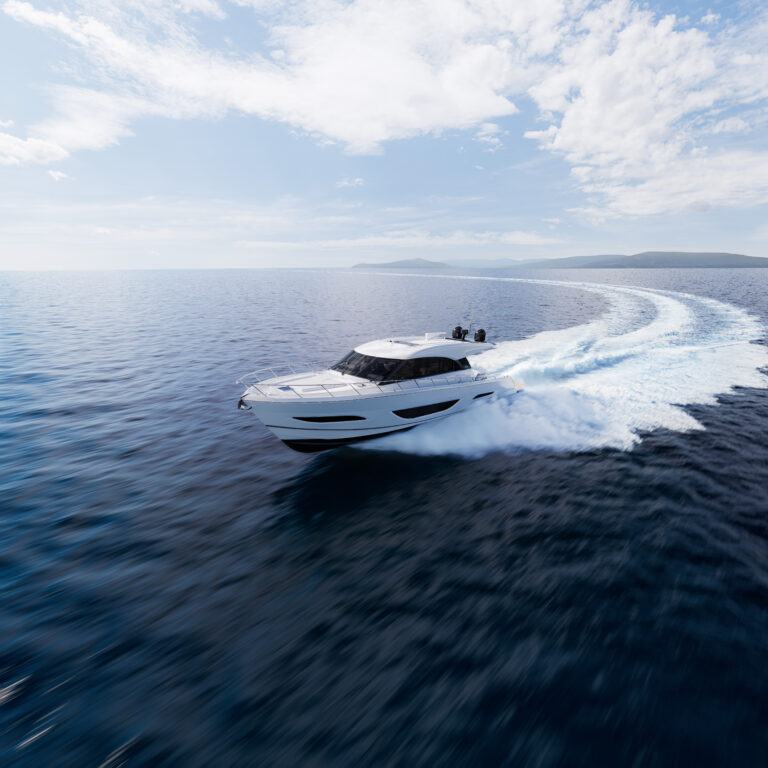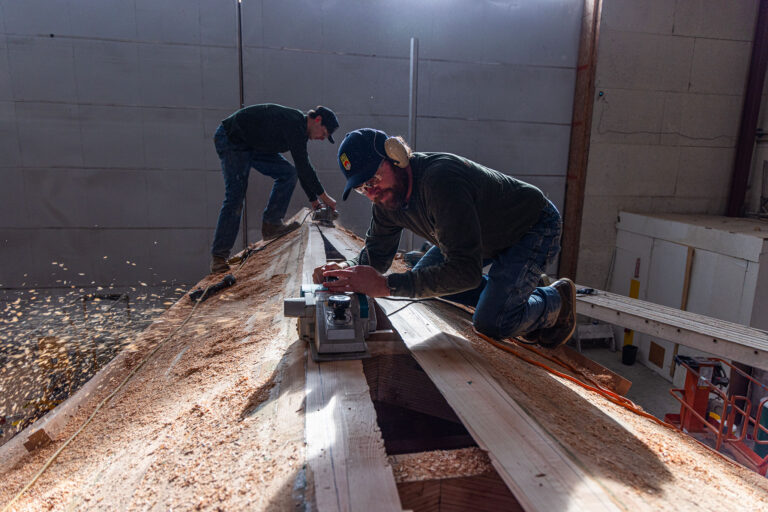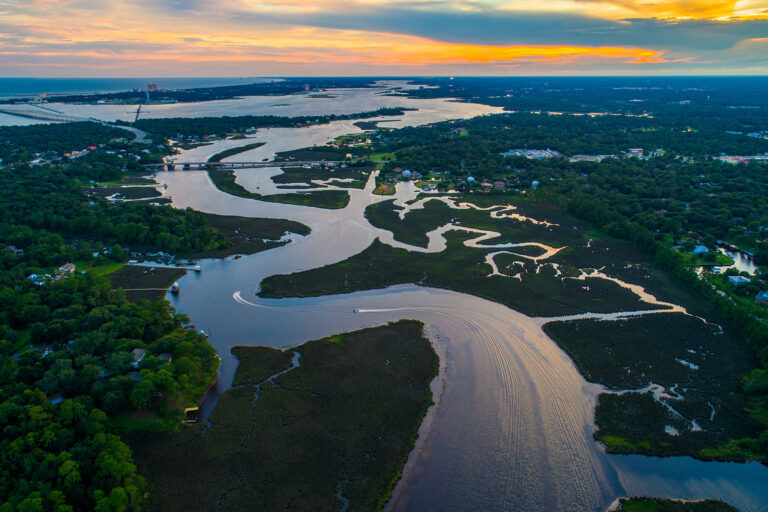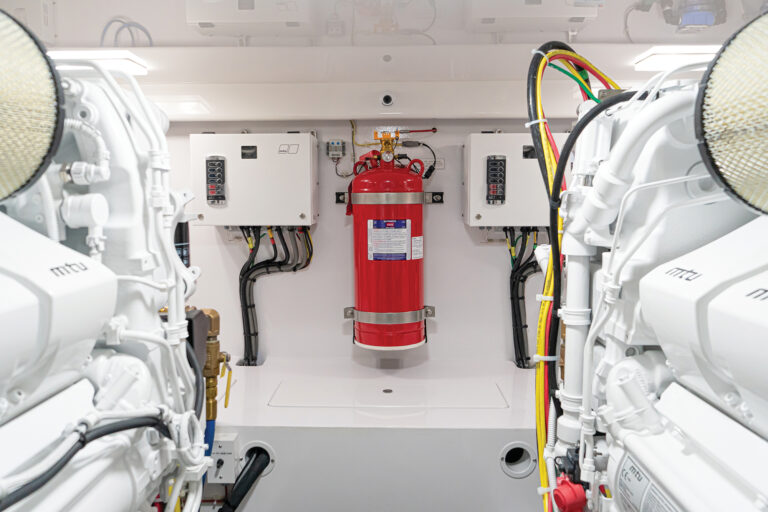The Hanse 320 and Catalina 320 mkII are taking their own tacks in the competitive 30- to 35-foot range
The Hanse 320 and Catalina 320 mkII are taking their own tacks in the competitive 30- to 35-foot range
For a few days in October a common and stubborn ailment brings me to Annapolis, Md.: boat fever. Rain or shine, hot or cold, the U.S. Sailboat Show has it all — variety, diversity and, yes, a modicum of insanity
because of the sheer number of boats lying gunwale to gunwale, bow to stern or just stern-to in their element.
There are the latest versions of familiar boats and a plethora of new ones, some of them so new that the gelcoat still seems to be curing in spots. While the latter is hyperbole, it is not far-fetched, because today’s market demands a constant flow of new models to satisfy buyers’ lust for the latest in design, gadgetry and performance.
Nowhere is this market tighter, tougher and more contested than in the 30- to 35-foot range, where choices are plenty but margins are slim. Competitors like the Bavaria 31 Cruiser, Jeanneau Sun Odyssey 321, Delphia 33, Dufour 325 or Hunter 31 and 33 make it a game of large producers. To them, a good entry-level boat is important in a market that favors smaller boats as well as for building a loyal customer base that can graduate to larger, more profitable models. For designers, smaller boats pose a formidable challenge. There’s little to play with as they are fighting for inches and ounces, trying to outwit each other to come up with boats that look swell and sail schnell.
As I walked the docks, these thoughts kept coming back, so I decided to take a closer look at two boats that fit this scenario nearly to a T. One was the Catalina 320 mkII. It’s an updated version of the Catalina 320, a 34-footer with a family cruising and club racing pedigree that was introduced in 1993, with nearly 1,100 built. The other was the Hanse 320, a new model that measures 31 feet, 6 inches overall, fresh from the Hanse factory in Greifswald, Germany, on the Baltic Sea. Hanse says the 320 and her larger sister ship, the 350, are “particularly fast yachts” with balanced sailing characteristics suited for small crews.
While Catalina has been a household sailboat name since 1969, when Frank Butler built the legendary Catalina 22, Hanse Yachts quickly rose from humble beginnings in 1990. The big bang came in 1993 with the Hanse 291, a $20,000 no-frills boat dubbed the “price hammer.” At the Hamburg, Germany, boat show Hanse took 30 orders for it and never looked back. Today, the company is one of the world’s largest sailboat builders, with an annual production of roughly 1,000 boats from 32 to 63 feet. And this past spring Hanse Yachts became the first sailboat builder to list shares on the Frankfurt Stock Exchange.
“You can’t expand and establish a company in the global market without capital,” Hanse founder and CEO Michael Schmidt commented at the Annapolis show.
“Schmiddel,” as he’s also known, has the reputation of a renegade and visionary who isn’t shy about blazing new trails. As a boatbuilder, yacht broker and successful big-boat racer (Admiral’s Cup and Sardinia Cup in the 1980s), Schmidt knows that light boats are fast boats, which is at odds with the current trend that puts more and more weighty gadgets and systems on board. So he decided to shave pounds and add stiffness to his boats by offering them with an optional epoxy laminate. And by allowing customers to configure interior décor and layout variations online (more than 80 combinations are possible), Hanse applied the have-it-your-way principle to the sailing yacht business.
Catalina Yachts started out during the heyday of the fiberglass boatbuilding revolution, and has weathered the times of change and consolidation in the industry. In the intervening 38 years, the company defined its style, built a loyal following and turned out approximately 75,000 sailboats.
“We always believed in evolutionary design,” said Gerry Douglas, vice president and chief engineer at Catalina, as we boarded the 320 mkII. “This boat was updated and improved, but it’s still recognized as the 320, and it can be raced against existing boats in class.”
Catalina rolls out a new boat every 12 to 18 months, according to Douglas, while it refines and updates existing models by tapping into a customer base for feedback. “We value user input and customer loyalty while we strive to preserve the resale value of our boats,” he said. “And we like to think that [our approach] keeps Catalinas from looking dated after a couple of years.”
The 320 mkII, which is built in Largo, Fla. — the company is based in Woodland Hills, Calif. — replaces the original 320, and devoted Catalina customers who toured the boat in Annapolis pointed out some of the 30 changes or upgrades, such as a 4-inch-longer V-berth, additional hanging locker, more space for a television, bifold door to the forward cabin, Corian countertops in the head, and additional headroom in the aft cabin.
“I like the splashboard behind the sink,” said Lynn Gillette of Annapolis, a longtime Catalina 320 owner.
Changes to the exterior include a rounded coachroof, more space in the cockpit, a molded transom with more locker space, and a telescoping swim ladder. The boat has an aluminum masthead rig by Selden, with rigid vang and trim lines that are led back to the cockpit. As a confessed tiller junkie I don’t consider wheel steering on a boat of this size practical, even with a folding wheel like on the 320 mkII. But I give kudos to Catalina for getting the new pedestal right. It puts instrument readouts and engine gauges within the field of vision of the person at the helm.
On the Hanse 320 wheel steering is standard for the U.S. market, with an optional traveler on the cockpit sole. The instrument readouts are installed on the aft end of the cockpit coamings because that’s where the helmsperson tends to sit on this boat. The boom-end sheeting system puts the mainsheet pulley inside the cockpit, but it’s an arrangement that works in conjunction with the tapered mast, a Hanse standard and a nod to performance-oriented sailing.
The sail plan consists of a fully battened main and a self-tending blade jib, while the Catalina uses a standard 135-percent roller-furling genoa. Douglas says 80 percent of his customers choose the in-mast furling option over the full-batten mainsail. Both builders use Yanmar diesels, but the Hanse is equipped with a Saildrive and the Catalina with a straight shaft.
The hulls of both boats maximize interior volume and cockpit space. It’s no coincidence that all Hanse yachts are designed by Judel/Vrolijk — the designers of America’s Cup holder Alinghi’s yachts — since Friedrich Judel was one of Schmidt’s racing mates. The Hanse 320 is a more radical design, with a nearly plumb bow, longer waterline (despite being nearly 3 feet shorter overall), and maximum beam carried farther aft. The boat is available with a deep-draft bulb keel that helps improve weight distribution for a more balanced boat. The deck features straight lines and angular planes that are enhanced by the dark tint of the portlights and flush deck hatches.
Below, the modern styling borrows from the interiors of the larger Hanse models. However, it seemed a bit short on storage. The boat at the show was hull No. 3 and hadn’t yet been commissioned for an owner. Hanse says future 320s will have more storage and a double sink in the galley, as well as a wider door to the forward cabin.
At the end of the day my notepad had spilled over, but it all boiled down to this: Catalina’s 320 has had 14 years to mature into its current state, which reflects the original idea of a family cruiser with club racing qualities, but it also incorporates user feedback and contemporary styling. The Hanse, on the other hand, follows a new design approach that is a faithful representation of Schmidt’s philosophy, which demands distinctive looks and above-average sailing performance. Hailing from two very different places and speaking to different tastes, these boats are vying for shares in the same contested market segment. It should be a fun battle to watch.
Dieter Loibner is sailing editor for Soundings. You can order a signed copy of his book, “The Folkboat Story” ($35, plus shipping) by sending an
e-mail to [email protected] (put “Folkboat Story” in the subject line).


